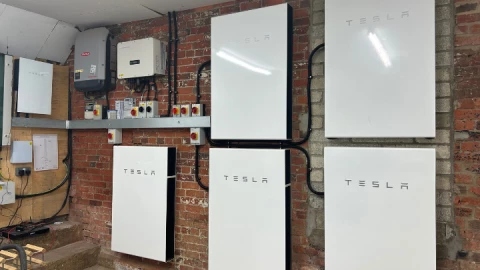nguyenminhson
Thành viên mới
Managing energy costs in office buildings
On average, a U.S. office building spends nearly
29 percent of its operating expenses on utilities, and the majority of this expenditure goes toward electricity and natural gas. For the average office building, energy costs can exceed $30,000 per year. Therefore, measures for saving energy can significantly assist office buildings in improving their bottom line.
How Office Buildings Use Energy
Office buildings in the U.S. use an average of 17.3 kilowatt-hours (kWh) of electricity and 31.8 cubic feet of natural gas per square foot (ft2) annually. (Data is calculated using a 2003 U.S. Energy Information Administration survey of commercial buildings.) Using average commercial energy prices of $0.10 per kWh and $0.98 per hundred cubic feet, the average cost of power per ft2 for office buildings is approximately $1.73 for electricity and $0.31 for natural gas. For the average office building in the U.S. (approximately 15,000 ft2), that translates into $30,600 spent on energy per year. For a customized benchmark rating of your facility, use the Energy Star National Energy Performance Rating system via Portfolio Manager software (www.energystar.gov/index. cfm?c=evaluate_performance.bus_portfoliomanager). Overall, lighting, cooling, and ventilation are responsible for more than 60 percent of electricity use by office buildings, and heating dominates natural gas consumption (Figure 1). As a result, these are the best areas to target for energy savings.
Quick Fixes
Many office buildings can benefit from quick low- or no-cost energy-saving solutions such as turning things off, turning things down, and following a cleaning and maintenance schedule that keeps equipment running efficiently.
Turning Things Off
It may seem trite, but the simple action of turning things off can yield considerable savings at no cost. Remember that for every 1,000 kWh that you save by turning equipment off, you save $100 on your utility
On average, a U.S. office building spends nearly
29 percent of its operating expenses on utilities, and the majority of this expenditure goes toward electricity and natural gas. For the average office building, energy costs can exceed $30,000 per year. Therefore, measures for saving energy can significantly assist office buildings in improving their bottom line.
How Office Buildings Use Energy
Office buildings in the U.S. use an average of 17.3 kilowatt-hours (kWh) of electricity and 31.8 cubic feet of natural gas per square foot (ft2) annually. (Data is calculated using a 2003 U.S. Energy Information Administration survey of commercial buildings.) Using average commercial energy prices of $0.10 per kWh and $0.98 per hundred cubic feet, the average cost of power per ft2 for office buildings is approximately $1.73 for electricity and $0.31 for natural gas. For the average office building in the U.S. (approximately 15,000 ft2), that translates into $30,600 spent on energy per year. For a customized benchmark rating of your facility, use the Energy Star National Energy Performance Rating system via Portfolio Manager software (www.energystar.gov/index. cfm?c=evaluate_performance.bus_portfoliomanager). Overall, lighting, cooling, and ventilation are responsible for more than 60 percent of electricity use by office buildings, and heating dominates natural gas consumption (Figure 1). As a result, these are the best areas to target for energy savings.
Quick Fixes
Many office buildings can benefit from quick low- or no-cost energy-saving solutions such as turning things off, turning things down, and following a cleaning and maintenance schedule that keeps equipment running efficiently.
Turning Things Off
|
|
|
It may seem trite, but the simple action of turning things off can yield considerable savings at no cost. Remember that for every 1,000 kWh that you save by turning equipment off, you save $100 on your utility


























